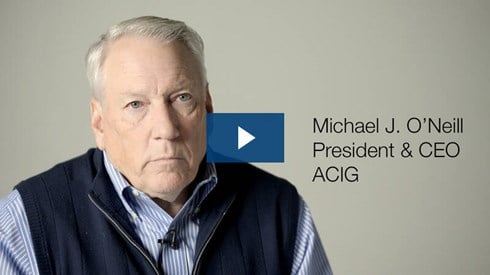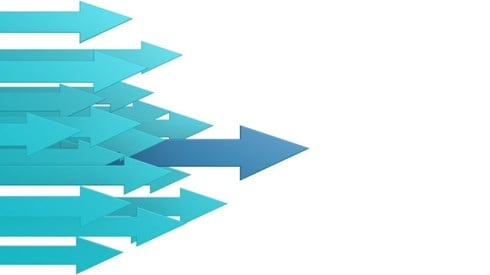For Many Companies, Group Captives Offer the Benefits of Partnership

December 06, 2021

Among the many benefits for some businesses of participating in a group captive are the opportunities that come from partnering with like-minded organizations.
Speaking recently at the International Risk Management Institute, Inc. (IRMI), 2021 Construction Risk Conference, Tricia Kagerer, executive vice president of risk management at Jordan Foster Construction, discussed her company's involvement with a group captive.
Speaking during a session titled "The Nuts and Bolts of Group Captives," Ms. Kagerer said her company's decision to join a group captive was motivated by a strategic business decision to surround the company by like-minded contractors so they could learn from one another.
The benefits of participating in such a group are "priceless," Ms. Kagerer said. "You're like-minded contractors working toward a common goal."
Contractors tend to be competitive, she noted, so the captive can provide a vehicle to get them to compete not just on the projects on which they're bidding but also other aspects of the business such as safety. Members can also acquire valuable information from fellow group captive members that the company otherwise might not have had. Participating in a group captive also might provide opportunities to partner with other members on joint ventures, Ms. Kagerer said.
"There's nothing better than the synergy of people in a room that are like-minded and headed in the right direction," Ms. Kagerer said.
Of course, participating in a group captive can offer contractors other significant benefits as well, such as stabilizing insurance rates, a critical factor in the current hard commercial insurance market. "Which really helps from a contractor's perspective with estimating," Ms. Kagerer said.
Current commercial insurance market conditions are spurring considerable interest among contractors in captive insurance arrangements, said Jason Oswald, president and managing director of Construction Insurance and Risk Captive of America (CIRCA), Ltd.
"The market has really changed the discussion around captives. We have more contractors coming to us engaging in the conversation, wanting to learn more about the group captive concept and the products that we're offering," Mr. Oswald said.
"There's multiple lines that are being impacted, so the result is you have more contractors wanting to engage in the conversation," he said. "Which is a great problem for us. It means that we have a bigger pool, a bigger pipeline of contractors that we get to vet, to find the right fit for the captives that we're managing."
In considering which of those interested contractors would be a good fit for their group, Mr. Oswald said a cultural fit is a key consideration. "You're buying into an insurance company, into another business, and you need to not do that blindly," he said. "For us, it's making sure that you have that senior-level commitment within the construction firm. It's more than just seeking a dividend or a return of premium."
There are two cornerstones to making a captive insurance arrangement successful, Mr. Oswald said: risk control and claims.
"That means that you need a senior-level team that understands the day-to-day exposures, that's out and engaged with the field, and is committed to providing the resources, whether that's technology, staffing, to make sure we return those employees home safely at the end of every day," he said. "Without that culture, you're not going to succeed within the captive, and it's not advantageous for the captive manager to bring a contractor in just to grow their top line."
Ms. Kagerer said that in considering group captive options, her company considered the fact that it engages in various types of construction including street and road, multifamily, stick-frame, and commercial work.
"Each type of work that we do has a different unique risk profile within our own industry," she said. Her company wanted to partner with like-minded companies that understood its business.
"I want people who can understand what it's like to do everything that we can from a safety and a quality perspective to do things right the first time," Ms. Kagerer said. "But when there's a problem, I want to know that I'm sitting across the table from someone who's asking me tough questions, but they understand my risk profile."
Jordan Foster Construction also was looking for a group captive whose members' long-term goals aligned with its own long-term goals, she said.
"If you choose to go into a captive, you're a contractor and you're basically joining the business of insurance," Ms. Kagerer said. "Who are you going to partner with? You have to spend some time vetting those partners."
Mr. Oswald says its critical that companies joining a group captive be able to step beyond their contractor identities and recognize that they've become partners in an insurance company.
"We're all competitive, he said. "In the group captive, to be successful, you have to be willing to check that at the door and walk in and be willing to share best practices," he said.
"You're operating a totally separate company at this point, and it is in your best interest to make sure that your fellow contractors in there are doing the right thing from a safety and a claims handling standpoint," Mr. Oswald said. "And being able to be vocal in that group is critical."
Before joining a group captive, it's important to understand how ownership is structured within the captive, Mr. Oswald said. "That's one of the critical pieces," he said. "If you're sitting across the table from other contractors in the captive, you want to know if everyone has an equal voice."
Mr. Oswald also suggested that companies considering joining a group captive narrow their choices down to two or three groups, then attend a board meeting of each of those group captives.
December 06, 2021





